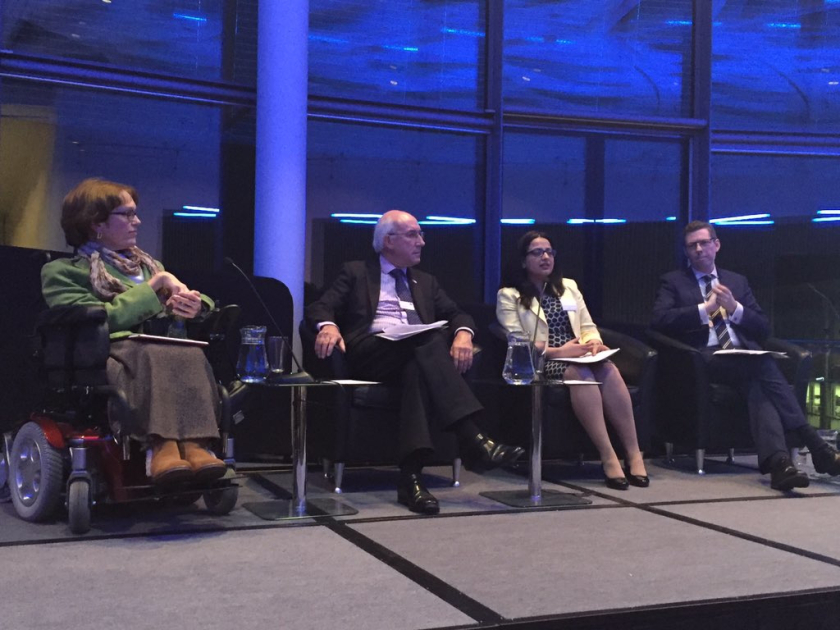-

Why Community Transport Matters
-
27th January 2016
-
-
by Bill Freeman
Chief Executive
Last Wednesday I spoke at an event at City Hall in London organised by ECT Charity, one of London’s largest community transport providers and a member of the Community Transport Association. Many from across the community transport, transport and business sectors, as well as representatives from Westminster, were gathered to launch a report by ECT: Why Community Transport Matters.
The report brings together two studies which aim to help community transport operators across the UK demonstrate their social and economic value.
The first study, Tackling Loneliness and Isolation through Community Transport, was written in partnership with Deloitte, and is a major piece of research looking at the economic cost of loneliness and social isolation.
The second study, A Practical Method for Measuring Community Transport Social Value, is aimed at giving CT operators the tools to make a compelling case on the social values of their services.
In this blog, we’ll be giving you an overview of what these studies found, and how it can benefit those of us working to provide accessible and inclusive transport.
As a sector, when we try to get support for community transport we often talk as if we’re asking people to make a choice between investing in something that creates social value rather than something that makes sense economically. Those of us working in the sector, however, know that this is not an ‘either or’ decision. Community transport is something which is good for society and good for the economy: it appeals both to the head and the heart.
Why Community Transport Matters opens its investigation on how we can prove this by discussing how nearly one third of older people in the UK, and half of over 80s, say that they’re lonely.
There are 14 million people over the age of 60 in the UK, with 4 million living alone. For these people, social isolation and loneliness can lead to depression, anxiety, high risks of heart problems, higher stress and a weakening of the immune system. The health effect that this can have on people’s mortality is comparable to smoking 15 cigarettes a day.
The report conservatively states that the cost of social isolation on the health service is £2.1 billion each year. And with estimates predicting that between 2008 and 2031 the number of people aged 66-74 living alone will increase by 44 per cent, and the number of over 75s living alone by 38 per cent, this is a cost that is only going to go up.
Community transport matters, then, because it can reduce the number of older people who are experiencing social isolation and loneliness. By giving older people access to their communities, enabling them to meet friends and to feel part of their community, CT operators ensure that less older people suffer from isolation. They are, therefore, less likely to develop the negative health consequences that come with those circumstances.
In fact, the report estimates that by reducing older people’s reliance on health and social services, the provision of community transport can save £0.75 billion a year through its role in combatting loneliness and social isolation. This is a huge amount of money and a figure which we hope will demonstrate just how important it is to invest in the provision of community transport across the country.
Further to this, if we take into account the economic benefits that community transport provides in terms of other public policy priorities such as improving access to employment, training and education, then this number is likely to be even higher.
The second part of Why Community Transport Matters was developed through the London Strategic Community Transport Forum and its specially established Social Value Working Group. The group set out to develop a practical, sharable, method for community transport operators to work out the social value of the services that they provide to their communities.
The methodology they put together means that CT operators can measure their social value in a common format. Through measuring how their services are: enabling independent living; facilitating social interaction; enabling affordable trips for voluntary and community groups; supporting volunteers and the voluntary sector; contributing to individuals’ wellbeing; and contributing to individuals’ health; they can clearly set out their social value in bids for contracts and funding. This process is still ongoing and more information on how to get involved in the development of this social value measurement can be found in the report.
As I said in my speech at the launch event on Wednesday, we know that people are more likely to value things if they understand them. Being able to capture and report the work that we do in terms that have greater resonance with policy makers will certainly go a long way to doing this.
Why Community Transport Matters demonstrates that community transport appeals to the socially conscious heart and to the economically-minded head: a fact that we have a responsibility to make sure everyone understands.
To read the full report, click here.
-
-
- About CTA
- /
- CTA Membership
- /
- CTWeek24
- /
- Policy & Research
- CommunitySolutions: A Manifesto for the Next UK General Election
- Our Campaigning Guide for Community Transport
- Our Policy Work
- Join Our Mapping England Passenger Survey
- Aneurin Bevan Transport to Health
- Climate Action in Scotland
- conneCTing England Programme
- Mapping Scotland Project
- Mapping Wales
- Mapping England
- Tackling Loneliness in England
- Healthy Communities in Scotland
- /
- Advice & Support
- /
- Training
- /
- Events
- /